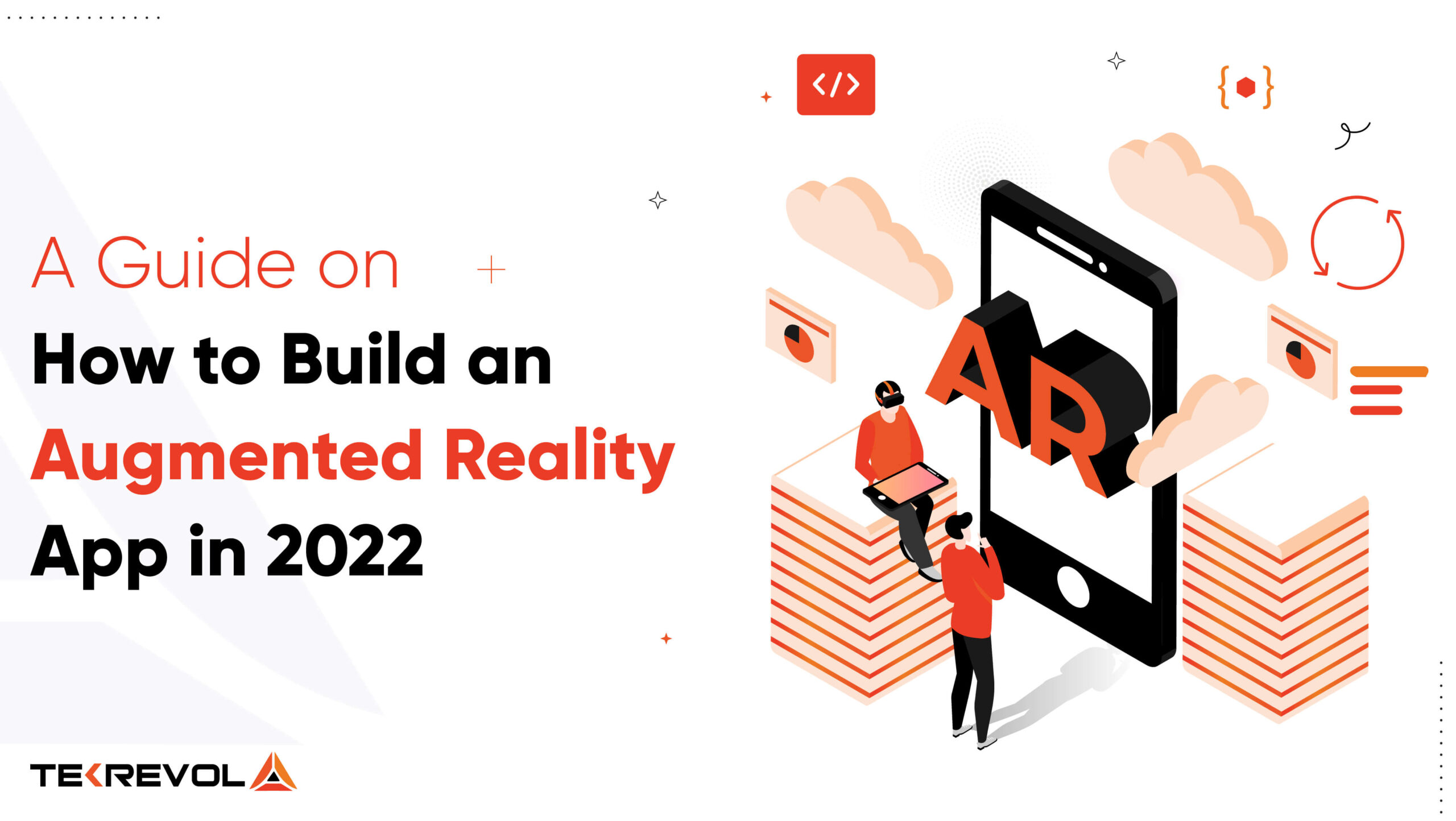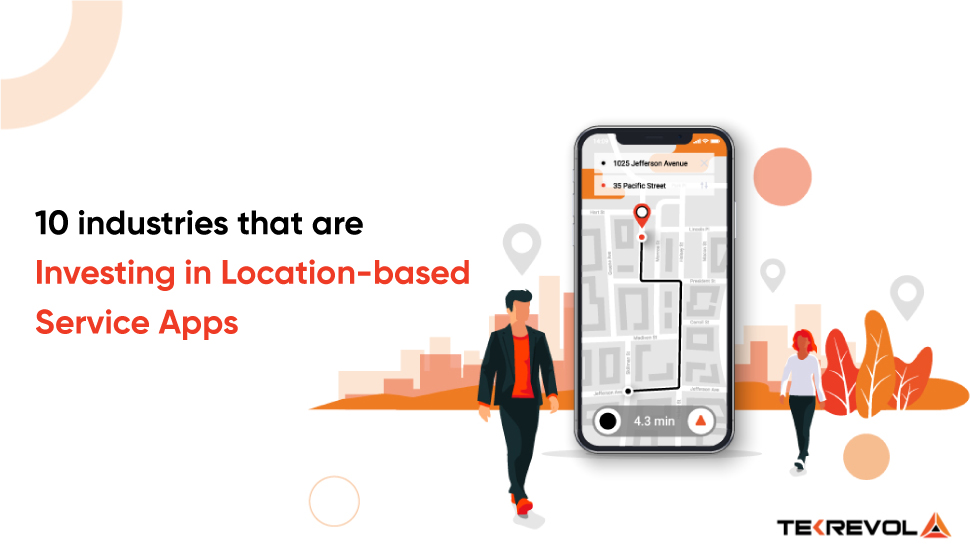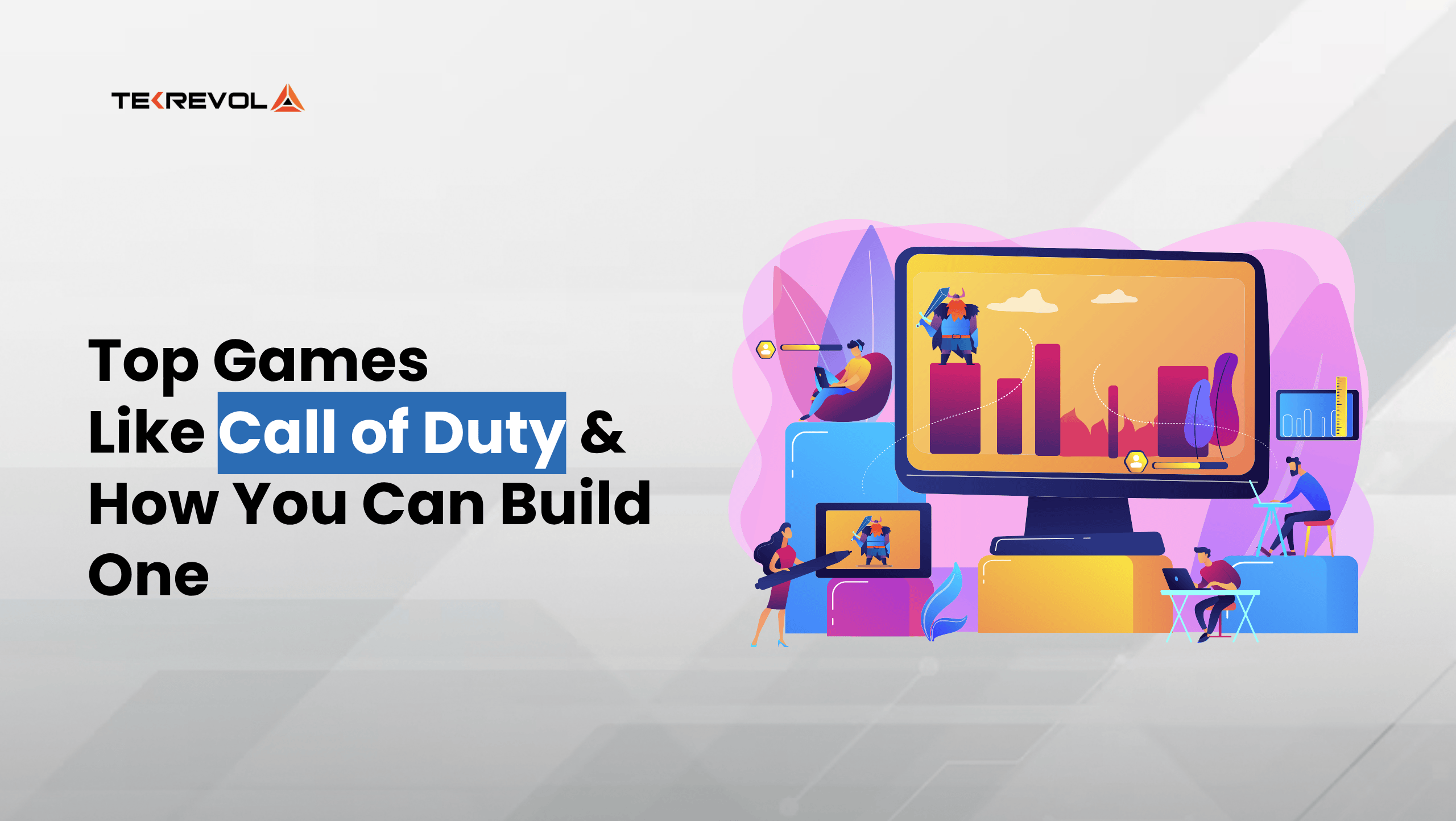While AR apps seem to be the fantasy for some end-users, it is a source of competitive advantage and a transformative use case for businesses and corporates like Target and IKEA. It has started redefining user experiences, be it in the sectors of online gaming, shopping, and even learning and development.
Considering its rapid success in the global business ecosystem, more and more startups and technopreneurs are showing immense interest in investing in this technology, specially via AR app development.
If you are here on how to build an AR app, here is an article that covers comprehensive insights from the potential of the AR market to building an augmented reality app.
AR Market – What do the statistics forecast about the future of augmented reality apps?
Here are some numerical reasons why entrepreneurs of today should know how to make an AR app and how important augmented reality implementation is in their businesses.
There are 1.7 billion mobile AR users worldwide (Statista).
The market size for augmented reality is expected to grow dramatically – and this market includes major segments like augmented reality apps, software, hardware and other industrial equipment.
In 2021, the size of the AR market was approx. 9.53 billion USD. Researchers are expecting a major shift and the market tends to bounce to 13 billion USD in 2023 and almost double in 2025 at 26 billion USD (Statista).
Snapchat, a popular social media app that leverages augmented reality in its core technical architecture has 332 million daily active users (Statista).
Another augmented reality app, Pokémon Go has generated 14.4 million downloads worldwide by 2023 (Statista).
Where are AR tech users located?
Saudi Arabia, UAE and United States are the hotspots for Augmented Reality app consumers and tech startups. This chart shows how many shoppers will have used AR-enabled applications by the year 2025 while buying online products:
| Location | Expected Users by 2025 |
| Saudi Arabia | 45% |
| United Arab Emirates | 42% |
| USA | 28% |
In fact, by 2025, 1/3rd of online shoppers in the USA would have used AR-enabled hardware and software, like virtual try-ons and oculus. Other countries include Canada, UK, and Australia.
Essential Benefits of Building Augmented Reality Apps for Businesses
While the statistics guide us on the consumer side usage of augmented reality, here are practical business benefits of using AR for the corporates.
- Competitive Advantage
- Virtual Try-ons
- Unique Customer Experience
- Improved Marketing and Sales

Competitive Advantage
Using Augmented Reality in your business model, marketing campaigns, direct products or services reflect a sense of market readiness, adaptability and responsiveness to trending technologies. As an early adopter with a forward-thinking approach, you can position yourself as a brand that turns fiction into reality for your target users. And competitive advantage in the world of business is more relevant now than ever. Not a jargon anymore, but a decent way most Forbes startups showcase themselves.
Advertisements, Marketing and Sales
For businesses and entrepreneurs, leveraging Augmented Reality can actually help you bring your AIDA model from theory to practical. While adopting AR in your advertising and customer service side reflects business agility, here is how it captures the audience for you:
AR grabs attention and creates brand awareness. It is not an entirely new way to advertise because brands like Warby Parker and Sephora are already doing it!

It piques interest and sparks the desire to buy a product when your target audience can virtually try them.
Finally, AR has the power to make your audience do the action, see and shop! And in a purchasing cycle
With advertisements and creating unique customer experience, AR allows for better visual communications internally and externally. In addition to customers, you can use Augmented Reality to provide in-house trainings, and ensure maximum user engagement for your employees!
Industrial Applications of Augmented Reality
Here are some common examples of augmented reality being successfully deployed in 8 diverse business sectors:
- Healthcare – improving patient experience during therapies and counseling sessions
- Tourism – translation and interpretation of signboards in remote locations
- Real Estate – augmented home buying and makeover experience
- Education – AR-enabled applications for medical training and development programs
- Gaming – interaction between real and virtual world via simulations
- retail and ecommerce – improved shopping experience with virtual try-ons
- Automotive – fully digital showrooms for vehicle display and sales representation
- Design modeling and architecture ��� real-time, automated changes to floor plans and engineering designs

Most Popular Augmented Reality App Examples For Development Inspiration
| AR App | How these apps are using Augmented Reality |
| Pokémon Go | it’s an AR-based game that engages players as they go hunting for Pokémon in their real locations. |
| IKEA Place | IKEA Place is a flagship Augmented Reality app from the giant furnishing company that facilitates users with a unique camera first buying experience. Users can place IKEA products (in their 3D appearance) into their real homes and see how accessories look. |
| Snapchat | it’s a fun camera application that uses Augmented Reality for filters, beauty effects and other photo editing features. |
| Google Lens
|
Google Lens is a one-stop solution for different traveling and tourism needs. Users capture real-world images from their camera and Google Lens detects texts and objects. Then it gives you specific details about those objects, translates text and integrates with map to help explore the world around users. |
| AR Zone | Like Snapchat, AR Zone is also a fun camera app and a flagship product from tech giant Samsung. It lets users add visuals like 3D texts and objects in their photos and videos in real time. Users can change their images into bitmojis in real time and edit their videos for professional use. |
| Home Depot | Home Depot is an AR-based interior decoration and online shopping app that lets users buy home accessories, supplies and even furniture with a virtual try-on option. |
| Target | Inherently a retail shopping app, Target has introduced a ‘See It In Your Space’ feature for users who want to see how products look in their real environments before paying for them. |
| Warby Parker | Warby Parker is an eyeglasses seller with a feature for virtual product try-on in their basic shopping app. |
| Sephora | It’s a makeup shopping app that scans users’ faces and body parts and lets them try makeup products like lip colors and blush on to help them purchase the ideal products for their skin type. |
| Zombies, Run! | A game similar to Pokémon Go in its AR capabilities, Zombies, Run has integrations of healthcare features and runs on smartwatches too.
Mondly – Mondly is a language learning app that engages students with AR and VR features. |
| MeasureAR | Measure AR is a unique app that lets users scan their real-world environments, then processes the images to show their sizes in height and width. As for now, people are using this app to measure everything from their heights to their home accessories like beds and tables.
|
All of these apps are either pure AR-based businesses, or have deployed augmented reality features to boost their sales and drive business growth.
- Want to launch an AR game like Pokémon Go?
- Learn everything you need to know about the types of AR games just click on the button
While Pokémon Go, Google Lens, Snapchat and Zombies, Run are making huge profits because of their apps’ unique engagement and experience, other apps like IKEA Place and Target are leveraging it for business agility and scalability.
Cost of Augmented Reality App
- A basic Augmented Reality app development costs approx. $65,000.
- An intermediate-level augmented reality mobile app development cost can range between $70,000 – $130,000.
- More advanced AR applications with AI and ML functionalities cost more than $150,000.
While these are quick estimates, there are six important factors that affect the total cost of app development:
- features
- Development hours
- Human resource
- Hiring locations
- Complexity of UI and UX design
- Tools and technologies
- frameworks
- software development toolkits
- Cloud services
- Third party integrations
- Database services
- Want experts to estimate the cost of your AR app?
- Learn everything you need to know about the types of AR apps
How to Make An Augmented Reality App?
Building an augmented reality mobile app development surely sounds lucrative and innovative. When you look at it as a project, it involves immense planning, decision-making for hiring human resources and purchasing tech tools.
And you steer clear through the process with strong market research, competitor analysis and a strong business plan. Here’s how to create AR app:
- Choose the type of AR application you want to build and launch.
- Write down the features you want to add.
- Choose a tech stack and create a development strategy.
- Hire an AR developer and complete technical milestones.
- Test the app and launch your AR product.

5 Steps to Make An Augmented Reality App
Let’s break down the whole process of building an AR app in 5 actionable steps:
1. Choose the type of AR application you want to build and launch.
The type of augmented reality app you want to launch totally depends on your business requirements.
- If you are a tech startup, you most probably want to launch a unique app that does something entirely new with this futuristic technology. In this case, you can choose to fill a market gap with this technology, support a business domain that previously lacked AR integrations or simply, come up with an AR-supported game.
- If you are an established business, you are most likely looking for an AR solution that boosts your marketing and sales efforts. Follow then IKEA Place and Target’s examples. If you already have a business app for your customers, you can choose to add an AR-specific feature.
Types of Augmented Reality Apps
Here are two main types of augmented reality apps that you can choose to invest in:
Marker-based Apps
Marker-based apps: these apps are simplest of Augmented Reality applications in the mobile technology. Markers are basically object triggers, for example specific icons, QR codes, barcodes, symbols, cards or images. A user captures these triggers in the device camera or the built-in camera feature of the app. The trigger is processed in the back-end of the app and the front-end shows an appropriate AR scene or an object.
Marker-based AR apps are simpler to develop and have innumerable business use cases. They don’t require implementation of complex technologies and so have a lower development cost as compared to other types of AR apps that process on advanced Artificial Intelligence.
Considering the ease of development, various free and premium AR frameworks and software development toolkits like Vuforia and Wikitude support marker-based development. We will, however, suggest you to check open-source SDKs, check their use eligibility, match against your project requirements and then create a technology stack.
Location-based Apps
Location-based apps: these augmented reality apps are more complex use cases and don’t use object triggers or codes. The app’s camera scans the real environment, identifies it and places 3D objects based on the back-end programming concepts. Most popular example of location-based AR app is the game Pokémon Go. It has high popularity, a fluid user experience and a strong technical architecture that works with GPS, compass and other sensors. In addition, these location-based apps are trained with Artificial Intelligence and Machine learning algorithms for image, object, environment and location recognition.
In a futuristic setting like NEOM City, such apps can be seamlessly integrated into the smart infrastructure, offering enhanced, location-based experiences powered by cutting-edge technologies.
Considering the advanced technical architecture, strong back-end requirements and smooth front-end functionalities, location-based AR apps take more time and money to develop. While you should expect a comparatively expensive app development cost for location-based applications, we’ll also tell you that these AR apps take at least 5 months or more for complete development. AR Toolkit is the by far the best software development toolkit for building location-based AR apps.
2. Write down the features you want to add.
While the total feature set depends on the functionality you wish to offer in your AR app, here are top 5 features that are necessary in any modern augmented reality digital solution:
- GPS detection and map integration
- Built-in camera feature – for capturing or scanning from real environments
- Marker recognition – for detecting images, icons, QR codes etc.
- Library of 3D visuals and text elements
- Guest sign up and social media sharing

As an appreneur, you can choose to offer as few or as many features you like. But choosing an app’s features is a critical factor because you want to balance the core functionality, boost the user experience and manage the user interface.
Let’s take an example. You launch a marketplace app and provide an AR scanning feature for viewing and paying. Sounds good and completes the app from experiential standpoint. Similarly, you launch a measurement app and add push notifications.
These are alerts and reminders that keep you connected with your audience. But such reminders are not typically needed in a measurement app – and when you send out a lot of alerts, this might actually deteriorate the user experience resulting in low downloads.
We recommend you do consult a product strategist or a UX specialist during this stage of the decision-making process so that your app has a minimal look and style and is complete in terms of usability and customer satisfaction.
After deciding features, it’s time to practically get into the game and witness the real development – coding and programming process.
3. Choose a tech stack and create a development strategy
Once you have figured out the features you want to offer in your app, you’re ready to take the next important step of choosing the right tools and technologies for your digital product. Remember that different features require different levels of coding and support.
From a technical standpoint, Augmented Reality apps need a robust programming architecture, especially in the back-end because that helps these apps recognize real environments and place virtual objects to create an integration between 2 different landscapes.
Also, AR development requires specific frameworks and software development toolkits – and most of them aren’t open-source and free. They have a potential cost. So, choosing a tech stack carefully is also recommended because it is a cost-center. Here are 4 factors you need to consider when choosing a tech stack:
- The size of your AR app and your target audience
- of features and core functionality
- Your plans to scale your AR product or business in future
- Your estimated AR app development budget
Technology Stack for Augmented Reality Apps
You or your AR developer will need a custom tech stack for building an AR app. Here is what one typically comprises:
Programming Languages
C++ and HTML are most common choices when creating a tech stack. They establish the fundamental technical architecture of any digital product – be it an app, a website, a SaaS solution or a corporate software.
Front-end and back-end frameworks
JavaScript has different libraries and frameworks like Node.js that support back-end and front-end development for different devices. Coming from an experienced AR developer, it’s ideal to add Python in your tech stack because it is highly compatible with different programming languages, and database management systems.
AR Frameworks
Here are top 3 AR SDKs that we use during the development process at Tekrevol:
- Wikitude
Wikitude is a premium AR software development kit purely made for corporates, businesses and enterprise-grade organization investing heavily in Augmented Reality. It offers features such as image recognition, CMS integration, location-based support, 3D detection and CMS integration.
Some of its specialized products include Wikitude Studio, 3D Object Targets, and Cloud Recognition. Wikitude lets you create apps for Android, iOS and Smart Glasses. It supports marker-based and marker-less AR development.
Wikitude comes with a free plan, but that’s too basic in nature to support AR app development. Its pro version starts from €2490 and there are other enterprise offers, with options for custom quotes.
- MAXST
MAXST is a Korean AR framework that has two separate software development kits – dedicated to 2D object tracking and 3D location detection.
App developers commonly use MAXST for AR game development because of its compatibility and extended support for Unity – a game development engine. It has other conventional AR features like environment mapping, image tracking and placement of digital objects on real environments and simulations.
- Vuforia
Vuforia is another top AR framework and software development kit. Most importantly, it has something for every type and size of business – from startup appreneurs to enterprise-grade brands. Some of its diverse corporate offerings include Vuforia Engine, Vuforia Studio, Vuforia Chalk and Vuforia Spatial Toolbox.
It recognizes different objects of diverse shapes and supports text and other visual elements. Currently, it has around 100,000 words in its directory. It supports Android, iOS, Unity, and UWP (Universal Windows Platform).
While Vuforia has basic plans for prototyping, its main costs start from $99/month including the cloud add-ons.
There are other augmented reality software development toolkits like ARCore and ARToolKit that you may want to check. For a more detailed insight, here is a suggested article that discusses 6 such AR frameworks for Android and iOS applications.
In addition to these software development toolkits, an AR app, like any other application will need a strong database system like MongoDB or MySQL. Plus, it needs a cloud service like AWS, Amazon Web Services.
4. Hire an AR app developer and complete technical milestones
This is your A-team that will support you throughout and after the development process. If you already have a technical background, let’s say in app coding, or AI programming or AR integrations, you will need a smaller team. However, if you are from a business background and have limited grip on programming, this is the main team you need for your project:Hire app developers will be good for you and for your business.

Your choice of human resource is definitely one important cost center in this project. To optimize your costs, you need to look at the operational locations and work arrangements of your team.
- Hiring an in-house team is very expensive because of full-time wages and benefits.
- Hiring a development team on an hourly basis – like staff augmentation is new and gives full flexibility and control over the project timelines.
- The last, common option is to outsource your overall app development project and monitor it remotely for timely completion, testing, and launch.
As for the hiring locations, here are some quick tips:
- Hiring from USA will require a decent budget, especially from Miami, Houston, and New York. But it’s still relatively economical as compared to European developers.
- Hiring from UAE and Saudi Arabia means mthe ost affordable app Development Cost, and here, you need to strongly assess the development portfolio before signing the contract.
5. Test the Augmented reality app and launch the product
This is the one last step you need to perform before your app is live for download and use by your target audience. Battle-testing an app is a primary factor in ensuring its success, and the user experience you wish to deliver.
AR app developers typically follow three different standards for testing and assessing the quality of any mobile application:
Technical performance: QA professionals assess the strength of backend and front-end of the app. They ensure the app build has no bugs, viruses and the app doesn’t crash while it runs on different platforms and screen sizes.
Navigation and user experience: testers in this stage ensure the app has a minimal user journey and is intuitive enough for all different types of users. App’s loading time, sign up and sign in, other end-user features and graphic stability are important parts of this test.
Data accuracy and security: an app is as good secure as. Penetration testers perform ethical hacking attempts to make sure the app doesn’t fall prey to data breaches and doesn’t leak sensitive user information. The other part of the test assesses an app’s ability to return accurate responses. In AR apps, these responses include accurate recognition of texts and images, locations and environments.
In technical terms, these testing types are called functional testing, instrument testing and unit testing.
Once the app is tested, it goes for client approval. It’s now ready for deployment, and store launching.
Read More: Important Augmented and Virtual Reality Trends
Over To You…
All the market figures and user acceptance suggest that we will witness augmented reality in most areas of our personal and professional life – starting from healthcare to real estate to shopping and gaming.
While our comprehensive guide on how to develop augmented reality apps concludes here, endless opportunities for business growth and scalability begin here.
Build Your AR App With TekRevol by Your Side
At Tekrevol, we specialize in transforming innovative ideas into immersive AR experiences that captivate users and drive business growth.
Whether you’re aiming to revolutionize retail, enhance education, or create the next big AR game, our team is equipped to guide you through every step of the development process.
From selecting the right technology stack to ensuring seamless user experiences, we’re here to make your AR app a success.
Explore our AR Game Development Cost Guide to understand budgeting considerations and plan effectively.
- Ready to build your AR app?
- Get in touch and we’ll walk you through the whole process to bringing your unique idea into a profitable digital reality!







![How to Create Music Apps Like Musi [2025 Guide With Alternatives]](https://d3r5yd0374231.cloudfront.net/images-tek/uploads/2025/08/Featured-Image-Music-apps-like-Musi.jpg)



